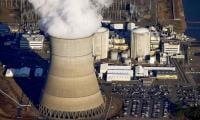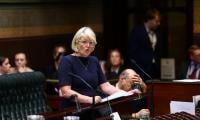On August 20, the second bilateral Joint Consultative Mechanism (JCM) on CPEC was held. The JCM is the apex political platform established by the Communist Party of China in partnership with ruling and opposition parties of Pakistan.
The first JCM was held on March 18, 2019 in Beijing. This meeting was co-hosted by the International Department of the Central Committee and the Pakistan-China Institute, under the auspices of the Friends of Silk Road. The meeting brought together the political leadership of both China and Pakistan. This apex dialogue was chaired by the minister of the International Department of the Communist Party of China and co-chaired by the chairman of the Senate of Pakistan.
The PTI, PML-N, PPP were represented by their leaders as were the regional political parties including but not limited not to the JUI-F, JI, National Party, PkMAP, ANP. Given the importance of the event, the president of Pakistan sent a letter of congratulations which was read on the president’s behalf by the chairman of Senate.
The collective political leadership of Pakistan agreed to the necessity of international cooperation, and there was a consensus on the Belt and Road Initiative as being a crucial manifestation of international cooperation, of which the China-Pakistan Economic Corridor is the flagship project.
Speakers emphasized that in the globalized world today, whether it is a pandemic like Covid-19, or a development project like CPEC, the effects of both are intertwined and shared, and it is in the interest of the people of both the countries and the region that there is closer coordination for taking a shared development agenda forward, and that the BRI is an apt initiative to do the same.
The post-pandemic economic recovery of Pakistan is largely depending upon CPEC investments, that have created over 70,000 jobs, revived local supply chains and industries due to mega CPEC projects, in addition to 20,000 scholarships to underprivileged Pakistani students to study in China. Apart from the investments, the grants from China such as that of the $250 million Gwadar International Airport, is giving an impetus to provinces such as Balochistan which have had a history of sense of deprivation.
Being a beneficiary of the BRI, Pakistan must develop and sharpen its foreign policy prism, as we see a new narrative being cultivated against China, that we saw in the first cold war against the Soviet Union. The urgency to contain a rising China can be explained by economics, as the IMF predicts that by 2024 China will have the largest economy in the world.
While Pakistan’s otherwise divided political parties reaffirmed their consensus on CPEC, and termed CPEC as a core interest, and compared it to Kashmir and the nuclear program, it is important that Pakistan’s political leadership also understands the challenges that come with CPEC and how important it is to preempt those challenges.
In the past two months, we have seen a renewed terror campaign in Sindh and Balochistan, with a focus on Karachi. The Pakistan Stock Exchange building was also attacked, where the terrorists gave a statement citing the Chinese investment in the Pakistan Stock Exchange as a motive. China’s enemies will target China where it is vulnerable, and its partners, that are more exposed and accessible. Pakistan has to have a comprehensive counter-terrorism strategy that shall protect foreign investments and preempt terrorist attacks before they occur. While Pakistan is a much safer place than it was five years ago, the threat of terrorism still looms and more needs to be done.
While the incumbent and the previous government have strived to reform the Board of Investment and create what is called an “ease of doing business”, we still do not have a one-window solution for investors. CPEC investments are by state-owned enterprises which have Chinese government backing and are largely working in government to government projects.
We have still to engage and convince the Chinese private sector to discover Pakistan’s market, so Pakistan and China can engage in trade. As of now, we are asking for dole-outs, whether it is in the latest Free Trade Agreement or in our negotiations with the Chinese government. Investors have to go from pillar to post for approvals, NOCs, and work between conflicting policies of provinces and the federal government.
The timing and consensus of the second JCM on CPEC is key to Pakistan’s future foreign policy endeavours, particularly in the context of the ‘new cold war’ between the US and China. It is time for Pakistan to reset and reboot it’s foreign policy goals, review who it’s friends and partners are, and identify those countries that are playing a crucial role in supporting Pakistan’s core interests – whether it is taking a stand on Kashmir or supporting Pakistan’s economic development – or both.
Strategic clarity is required to rid our lens of the blur that often clouds them when we think in terms of external engagement. Regionally, the stars could not be better aligned for Pakistan- Mahinda Rajapaksa, the initiator of the Habantota Port is back in power in Sri Lanka (whom the PM Khan astutely called to congratulate), Nepal is turning a page in its coziness with India and taking a stand against Indian hegemony, Iran has just signed a strategic deal with China under the BRI (ejecting India from Chabahar), while Afghanistan is moving towards a new and inclusive government which would be keen to partner in CPEC.
It is time that a new ‘CPEC-plus’ bi-partisan national consensus emerges in Pakistan that includes economic development, counterterrorism and foreign policy. Only then will Pakistan be able to find its rightful place in the 21st century.
The writer is the executive director of the Pakistan-China Institute.















